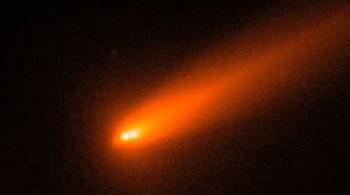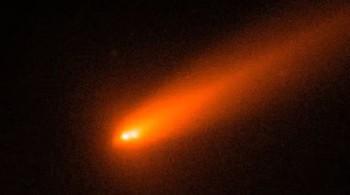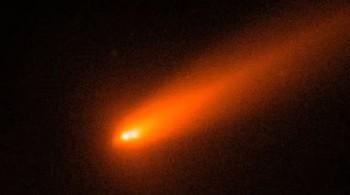
Comet C/2025 K1 (ATLAS) breaks into 3 after coming close to Sun
In a rare and fascinating astronomical event, Comet C/2025 K1 (ATLAS) has broken into three pieces after passing too close to the Sun. This extraordinary occurrence was captured by astronomers using Italy’s Copernicus telescope, providing a unique glimpse into the comet’s fragile structure. According to reports, the comet’s nucleus became unstable after it swung close to the Sun on October 8, resulting in a dramatic split into three distinct fragments.
Comet C/2025 K1 (ATLAS) was first discovered in May 2025 by the Asteroid Terrestrial-impact Last Alert System (ATLAS) survey, a robotic telescope system designed to detect near-Earth asteroids and comets. Initially, the comet was thought to be a single, intact object, but as it approached the inner solar system, astronomers began to notice changes in its behavior. As the comet drew closer to the Sun, its ices began to vaporize, creating a bright tail of gas and dust that stretched millions of kilometers into space.
However, it was not until the comet’s closest approach to the Sun, known as perihelion, that the true extent of its fragility became apparent. On October 8, Comet C/2025 K1 (ATLAS) passed within 1.2 astronomical units (AU) of the Sun, where 1 AU is the average distance between the Earth and the Sun. At this point, the comet’s surface temperature soared, causing its ices to vaporize rapidly and leading to a catastrophic destabilization of its nucleus.
The resulting break-up of the comet was captured in stunning detail by Italy’s Copernicus telescope, which revealed two large fragments drifting approximately 2,000 kilometers apart. A smaller, third piece was also visible, located to the left of the larger pair. The images provide a unique insight into the comet’s internal structure, suggesting that it was composed of loosely bound material that was unable to withstand the intense heat and gravitational forces generated by its close encounter with the Sun.
The break-up of Comet C/2025 K1 (ATLAS) is not an isolated event, as several other comets have been known to fragment in similar fashion after passing close to the Sun. One notable example is Comet Shoemaker-Levy 9, which broke into multiple pieces after its close approach to Jupiter in 1992. However, the splitting of Comet C/2025 K1 (ATLAS) is particularly significant, as it provides astronomers with a rare opportunity to study the internal structure and composition of a comet in unprecedented detail.
As the fragments of Comet C/2025 K1 (ATLAS) continue to drift apart, astronomers will be closely monitoring their behavior, searching for clues about the comet’s origin and evolution. The study of comets like C/2025 K1 (ATLAS) is essential for understanding the formation and development of our solar system, as these objects are thought to be remnants from the early days of planetary formation.
In conclusion, the break-up of Comet C/2025 K1 (ATLAS) after its close encounter with the Sun is a remarkable event that provides a unique glimpse into the fragile structure of comets. As astronomers continue to study the fragments of this comet, they may uncover new insights into the origin and evolution of our solar system, shedding light on the mysteries of the cosmos.





